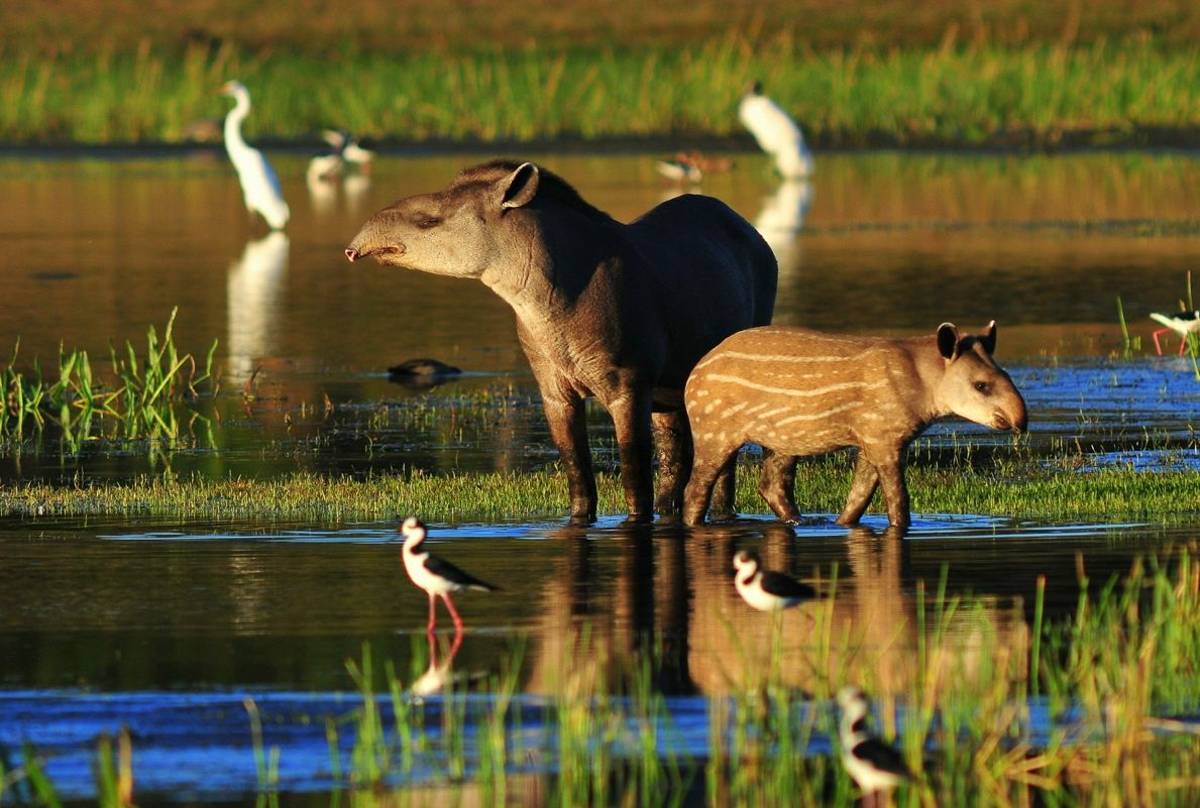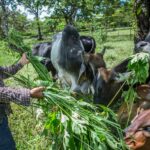Pantanal Wetlands: A Rich Mosaic of Brazilian Wildlife

Nestled in the heart of South America, the Pantanal wetlands of Brazil emerge as a stunning tapestry of biodiversity, offering a unique and thriving ecosystem. Often overshadowed by the grandeur of the Amazon Rainforest, the Pantanal is the world’s largest tropical wetland area, renowned for its exceptional wildlife diversity and pristine natural landscapes.
Geography and Unique Characteristics:
Encompassing an area roughly the size of Portugal, the Pantanal spans across Brazil, Bolivia, and Paraguay, with the majority situated in the Brazilian territory. Unlike traditional wetlands, the Pantanal experiences a distinctive annual flood-dry cycle, transforming the landscape into a dynamic mosaic of flooded plains, savannas, and lush forests. This cyclic inundation sustains an unparalleled richness of flora and fauna.
Avian Abundance:
The Pantanal is a birdwatcher’s paradise, boasting over 650 species of birds. From the iconic Jabiru stork with its impressive wingspan to the vibrant hyacinth macaw, the wetlands provide a haven for both migratory and resident bird species. The diverse habitats, including lagoons and marshes, attract flocks of waterfowl, making the Pantanal a crucial stopover for many migratory birds.
Aquatic Wonders:
The wetlands’ extensive network of rivers, tributaries, and oxbow lakes is home to a staggering variety of aquatic life. Giant otters gracefully navigate the waterways, while caimans bask in the sun along the riverbanks. The Pantanal is also renowned for its impressive population of anacondas, the world’s largest snakes, silently gliding through the water in search of prey.
Mammalian Marvels:
Terrestrial mammals find sanctuary in the Pantanal’s mosaic of habitats. Jaguars, the elusive and powerful big cats, thrive in this unique ecosystem, preying on the abundant wildlife. Tapirs, capybaras, and giant anteaters roam the plains, adding to the rich diversity of mammalian species that call the Pantanal home.
Conservation Challenges:
Despite its ecological importance, the Pantanal faces threats from agricultural expansion, deforestation, and climate change. The delicate balance of the wetlands is at risk as human activities encroach upon these pristine landscapes. Conservation efforts are crucial to preserve the Pantanal’s unique biodiversity and ensure the long-term sustainability of this vital ecosystem.
Eco-Tourism and Sustainable Practices:
Recognizing the importance of the Pantanal, sustainable eco-tourism initiatives have gained traction. Responsible tourism provides an opportunity for visitors to experience the wetlands’ wonders while contributing to conservation efforts. Local communities and authorities are working together to implement practices that safeguard the environment, fostering a harmonious coexistence between human activities and the rich biodiversity of the Pantanal.
The Pantanal wetlands, with its diverse landscapes and extraordinary array of wildlife, stand as a testament to the resilience and beauty of Brazil’s natural heritage. As efforts to conserve and protect this unique ecosystem intensify, the Pantanal serves as a reminder of the delicate balance required to sustain the intricate web of life that flourishes in this rich mosaic of Brazilian wildlife.

